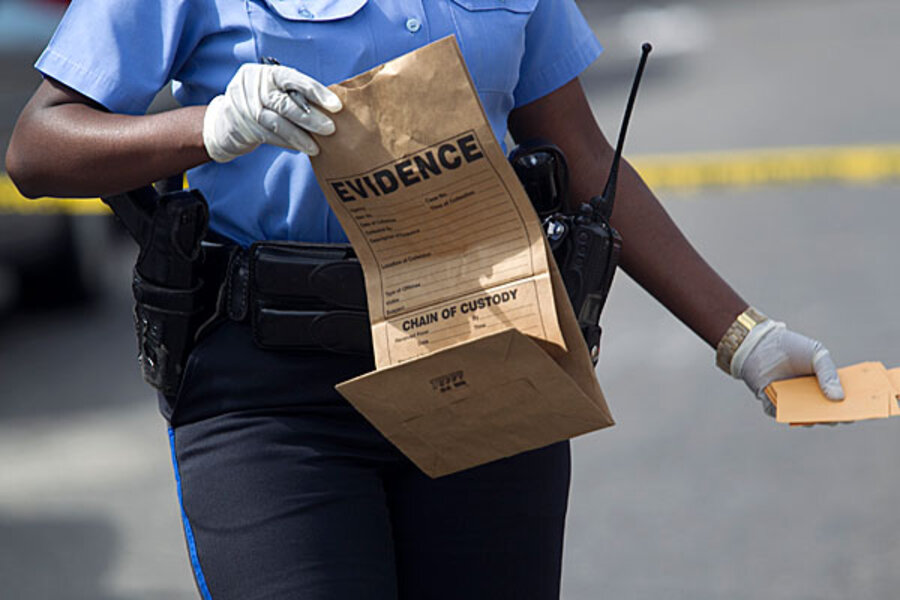19 shot at parade on Mother's Day in New Orleans
Loading...
| New Orleans
Video released early Monday by New Orleans police shows a possible suspect in the Mother's Day gunfire that wounded 19 people during a neighborhood parade.
The grainy surveillance video shows a crowd suddenly scattering in all directions, with some falling to the ground. They appear to be running from a man who turns and runs out of the picture. The person is wearing a white T-shirt and dark pants. The image isn't clear but police say they hope someone will recognize him and notify investigators.
Still pictures of the suspect have been posted on YouTube, police said.
Police believe more than one gun was fired in the burst of Sunday afternoon violence — the latest to flare up around a celebration this year — and they have vowed to swiftly track down those responsible. Detectives were conducting interviews, collecting any surveillance video they could find and gathering evidence from the scene. Cell phone video taken in the aftermath of the shooting shows victims lying on the ground, blood on the pavement and others bending over to comfort them.
Police also say the reward for information leading to arrests and indictments in the case is $10,000.
At least three of the victims were seriously wounded. Of the rest, many were grazed and authorities said that, overall, most wounds were not life threatening. No deaths were reported.
The victims included 10 men, seven women, a boy and a girl. The children, both 10 years old, were grazed and in good condition.
It's not the first time gunfire has shattered a festive mood in the city this year. Five people were wounded in January after a Martin Luther King Jr. Day parade, and four were wounded in a shooting in the French Quarter in the days leading up to Mardi Gras.
"The specialness of the day doesn't appear to interrupt the relentless drumbeat of violence," Mayor Mitch Landrieu said at a news conference outside a hospital where victims were being treated Sunday night.
Mary Beth Romig, a spokeswoman for the FBI in New Orleans, said federal investigators have no indication the shooting was an act of terrorism.
"It's strictly an act of street violence in New Orleans," she said.
As many as 400 people came out for the second-line procession — a boisterous New Orleans tradition — though only half that many were in the immediate vicinity of the shooting, Police Superintendent Ronal Serpas said. Officers were interspersed with the marchers, which is routine for such events.
Police saw three suspects running from the scene. No arrests had been made as of late Sunday.
Outside the hospital Sunday night, Leonard Temple became teary as he talked about a friend who was in surgery after being shot three times during the parade. Temple was told the man was hit while trying to push his own daughter out of the way.
"People were just hanging out. We were just chilling. And this happened. Bad things always happen to good people," said Temple, who was at the parade but didn't see the shootings.
Second-line parades are loose processions in which people dance down the street, often following behind a brass band. They can be planned events or impromptu offshoots of other celebrations. They trace their origins to the city's famous jazz funerals.
A social club called The Original Big 7 organized Sunday's event. The group was founded in 1996 at the Saint Bernard housing projects, according to its MySpace page.
The neighborhood where the shooting happened is a mix of low-income and middle-class row houses, some boarded up. As of last year, the 7th Ward's population was about 60 percent of its pre-Hurricane Katrina level.
The crime scene was about 1.5 miles from the heart of the French Quarter and near the Treme neighborhood, which has been the centerpiece for the HBO TV series "Treme."
Sunday's violence comes at a time when the city is struggling to pay for tens of millions of dollars required under federal consent decrees to reform the police department and the city jail.
Shootings at parades and neighborhood celebrations have become more common in recent years as the city has struggled with street crime, sometimes gang-related.
In January, police said a feud resulted in the drive-by shooting that wounded five people about 30 minutes after a parade had passed by on Martin Luther King Jr. Day. The next month, four people were shot following an argument in the French Quarter during the last weekend of partying before Mardi Gras. Arrests were made in both cases.
Police vowed to solve Sunday's shooting, too. Serpas said it wasn't clear if particular people in the second line were targeted, or if the shots were fired at random.
"We'll get them. We have good resources in this neighborhood," Serpas said.
___
Contributing to this report were Associated Press writers Michael Kunzelman and Kevin McGill in New Orleans and AP Radio reporter Jackie Quinn in Washington.
Copyright 2013 The Associated Press.







